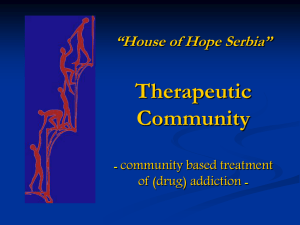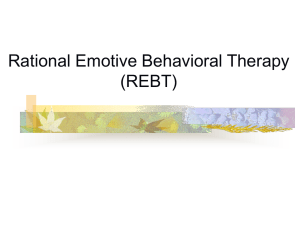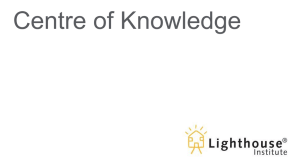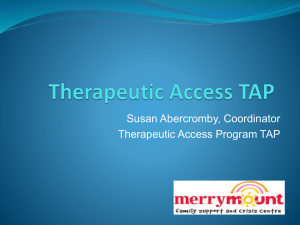Robert Elliott - Welcome and Introduction
advertisement
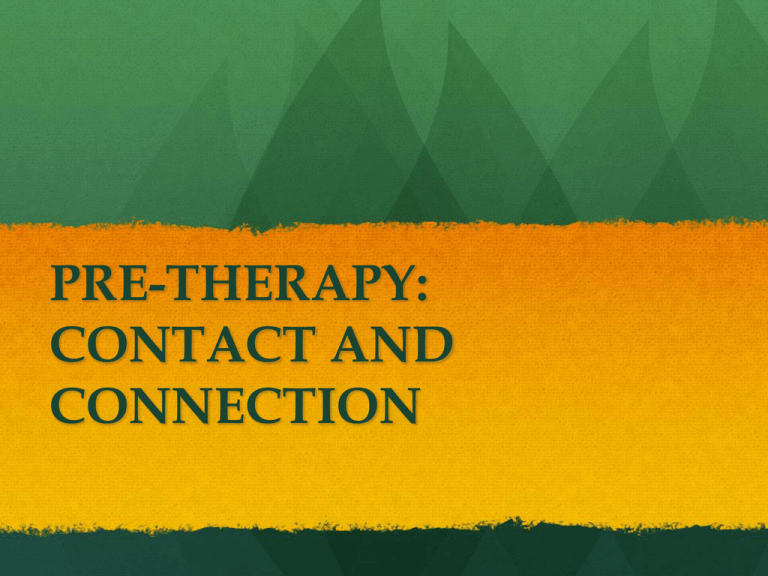
PRE-THERAPY: CONTACT AND CONNECTION Keynote Speakers Lorna Carrick: Teaching contact work to people who work with clients on the autistic spectrum Dione van Werde: Personal reflections on Pretherapy contact work in a hospital setting Rab Erskine: Using Pre-therapy in wilderness contexts Workshop Presenters 1. Wendy Traynor: Pre-Therapy with people who hear voices or dissociate = FULL 2/5. Mathias Dekeyser: Monitoring communicative contact: (a) history and (b) practice 3. Lorna Carrick & Anna Robinson: Training in Contact work 4. Pam Courcha: Supporting home carers in their work with people with dementia 6. Rab Erskine: Introduction to the physiological and therapeutic benefits of nature = FULL Reminders If you haven’t signed up for a workshop, just go one that isn’t full. There is an evaluation form in your packet. Be sure to fill it out before you leave & leave on tables for us to collect. Welcoming Contact Work within its Multiple Contexts Robert Elliott University of Strathclyde The Contexts of PreTherapy Contact Work Historical Roots The Relational Continuum Scientific: The State of the Evidence Political Marginalisation As a Key Therapeutic Task 1. Historical Context 19578-63: Wisconsin Project: Rogers, Gendlin et al go off to Mendota State Hospital in Wisconsin to test the Process Equation with psychiatric patients labelled as “schizophrenic” Today regarded as a noble failure But developments in practice in the study sow the seeds for Focusing & Pre-therapy Gary Prouty (1936-2009), developer of Pre-therapy/Contact Work: Grows up with severely mentally disabled brother with psychotic processes Strongly influenced by Carl Rogers, Gene Gendlin & Fritz Perls Becomes fascinated in Rogers first condition, that there be psychological contact between client and therapist 1966: Begins working to develop Pre-Therapy for people with dementia & psychotic processes Joined by Hinterkopf and Brunswick 1. Historical Context, cont Prouty’s work is ignored in the US, as North American psychiatry becomes increasingly medicalized However, Europeans pick up the work, extend it to geriatrics Netherlands: Coffeng, Peters Belgium: van Werde Switzerland: Pörtner Italy: Dinacci UK: Sanders Denmark: Somerbeck 2. Locating Pre-therapy on the Relationship Continuum 1. Severe loss of psychological contact: psychotic states, dementia, severe dissociation, moderate to severe autistic states 2. Minimal contact: Aspergers process; moderate dissociation; overwhelmed anxiety states; self-numbing 3. Grey zone functioning: fluctuating, inconsistent contact; mild/ quasi-dissociation 4. Every day relatively superficial connection (friendly or conflicted) 5. Facilitative communication (empathy, unconditional positive regard, genuineness) 6. Intense relational contact: Encounter; I-Thou; Relational Depth; Moments of Meeting 3. The Scientific Context: The State of the Evidence -1 Pre-therapy research reviewed by: Dekeyser, M., Prouty, G., & Elliott, R. (2007). Pre-Therapy Process and Outcome: A review of research instruments and findings. Person-Centred & Experiential Psychotherapies, 7, 37-55. In his workshop Dekeyser will describe previous and emerging measures of client psychological contact, and therapist pre-therapy responses Pooled outcome from 18 clients seen for 6 – 7 months of Pre-therapy: Pre-post Effect size = .64 Sample too small to influence treatment guidelines 3. The Scientific Context: The State of the Evidence - 2 Elliott et al. (2013): Promising evidence for effectiveness of person-centred-experiential therapies with clients with psychotic processes Meta-analysis of 6 outcome studies Mean Pre-post Effect = 1.08; Comparative Effect = +.39 Contradicts NICE guidelines banning use of counselling with schizophrenia Bergmann, Elliott & Peyton updated meta-analysis in progress 16 studies located & analysed so far Pilot results: Pre-post ES = .89; comparative ES = +.05 Based on available research evidence: Pre-therapy and PCE therapies appear to be promising approach But not taken seriously due to lack of research 4. Political Marginalisation Lack of strong evidence combined with prejudices about Pre-therapy Contact Work = > exclusion from existing practice guidelines: UK: Humanistic Therapy competencies (Roth, Hill & Pilling, 2009); Competences for Psychosis & Bipolar Disorder (Roth & Pilling, 2012) England/Wales: NICE Guidelines for Schizophrenia (2010) ban on use of counselling for clients Conversations with Pilling (2009) revealed that he believed that Pre-therapy contact work is mimicry that would be experienced by clients or children as noxious or harmful 5. Pre-therapy Contact Work As a Key Therapeutic Task Therapeutic tasks: important pieces of therapeutic work that are signalled by client markers and follow a common sequence to resolution. Examples: Internal conflicts (configuration work or two chair work) Unclear felt sense (Focusing) Rather than an entire therapy in itself, Pre-therapy contact can be thought of as a discrete task Can be applied within a range of Person-Centred-Experiential psychotherapies, ranging from nondirective to emotionfocused As long as therapeutic conditions are strongly present, even it not currently perceived 5. Pre-Therapy Contact Work Task: Initial Rational Model Stage Client Process Therapist Facilitating Responses 1. Marker: Pre-Expressive State. Severe loss of psychological contact, eg, psychotic states, dementia, severe dissociation, moderate to severe autistic states. Attend to pre-expressive state 2. Minimal psychological contact: hints of contact Offer Contact Reflections present but mostly out of contact. 3. Grey-zone functioning: Moderate loss of contact, eg, Aspergers process, mild dissociation, overwhelmed anxiety states, selfnumbing. Expressive functioning: Everyday relatively superficial connection, friendly or conflicted (=minimal resolution). Interpersonal attunement to self, therapist, others. 4. 5. 6. Intense therapeutic relational contact (=full resolution). Monitor momentary level of contact function; offer mix of contact and content reflections Use empathic reflections to help client their experience; explore possible conflicts or misunderstandings Use evocative or exploratory reflections or meta-communication to help client deepen or heighten experience Close nonintrusive empathic engagement; congruence/appropriate self-disclosure Further Contexts Education of support workers, carers & professionals Hospitals Wilderness Home health care Families Measurement ???

